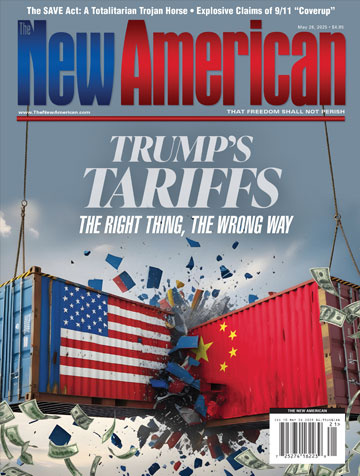
Paper price labels for the more than 120,000 products offered at Walmart’s 2,300 stores will disappear in two years or sooner. Instead, the store will implement “dynamic pricing,” and customers will see “digital shelf labels,” or DSLs.
Intended as another cost-savings measure (changing paper prices takes employees two days on those 120,000 items), the new technology can accomplish the same task in minutes.
Senator Elizabeth Warren (D-Mass.), ever on the lookout for a reason to criticize the free-market system in the United States, jumped to the conclusion that the move is “price gouging, plain and simple” when Wendy’s installed dynamic pricing in February.
Her view is that nasty, greedy, unscrupulous and self-seeking capitalists are forever seeking ways to take advantage of their customers. That was her motivation behind creating the Consumer Financial Protection Bureau (CFPB) following the financial crisis of 2007-2008. It has been used ever since to “monitor how financial entities used social media and algorithms to target consumers.”
Instead, dynamic pricing will allow Walmart to reduce prices for its customers by immediately installing “Rollback” pricing. In the bakery departments, for example, products nearing their expiration dates would have prices reduced significantly to make room for fresh items. It will also allow special pricing for overstocked items to make room for others more in demand.
As Matt Pavich, senior director of innovation and strategy at software company Revionics, noted, “There is some negativity on dynamic pricing, but in retail the pricing invariably moves down” rather than up.
Food stores implementing dynamic pricing promote sales on ice cream on a warm day to boost traffic while fast-food outlets could reduce prices on hamburgers during slow times.
Dynamic pricing began with the deregulation of airlines back in the early 1980s, allowing them to set their own prices based on market forces. By incorporating into their algorithms such things as seasonality, popular events happening near flight destinations, and times remaining before departure, prices came down significantly. It also continues to serve as a model for the argument that private market forces are vastly more efficient at predicting prices than bureaucrats thousands of miles away ever could.
Customers using Instacart already know dynamic pricing by the name “Busy Pay,” and DoorDash users as “Peak Pay,” where they are willing to pay extra during especially busy times. Raising prices draws in additional drivers, which has the effect of reducing prices. Thus the well-known mantra: The solution to high prices is high prices.
Amazon, for example, can update its prices on its vast inventory as frequently as every 10 minutes based upon competitors’ prices, recent sales data, and demand predictions for the future. Ticketmaster has used dynamic pricing to reflect changes in supply and demand, the time remaining before the event, the weather, and even recent team performance.
Rideshare companies such as Uber and Lyft adjust their prices according to the weather, traffic, and popular scheduled occasions in the area such as sporting events and concerts.
Disney has used dynamic pricing at its theme parks for years, charging more for tickets on days with historically high volume (such as weekends and seasonal school breaks), while charging much less during times with historically lower traffic.
Even utility companies are using dynamic pricing to reduce the load on their facilities during hot days. Discounts apply during hours when homeowners are typically away at work, encouraging them to adjust their schedules and their energy demands accordingly.
Bars and restaurants are increasingly using dynamic pricing to promote special events, happy hour discounts, 2-for-1 cocktails, and other discounts during the week. Hotels are using the technology as well, along with cinemas and leisure attractions, offering discounts on slow days. And, of course, “loyalty” awards are tracked to reward repeat customers.
The technology is also increasingly being applied to companies that provide service house calls. Their prices are variable depending on the weather, distance to the home, the time of day, weekends, availability of techs, and emergencies.
All of which serves in general to bring prices down and improved services up, contrary to the anti-capitalist mentalities of socialists such as Warren who think the government knows best.
The new technology will start showing up at Walmart early in 2026.




